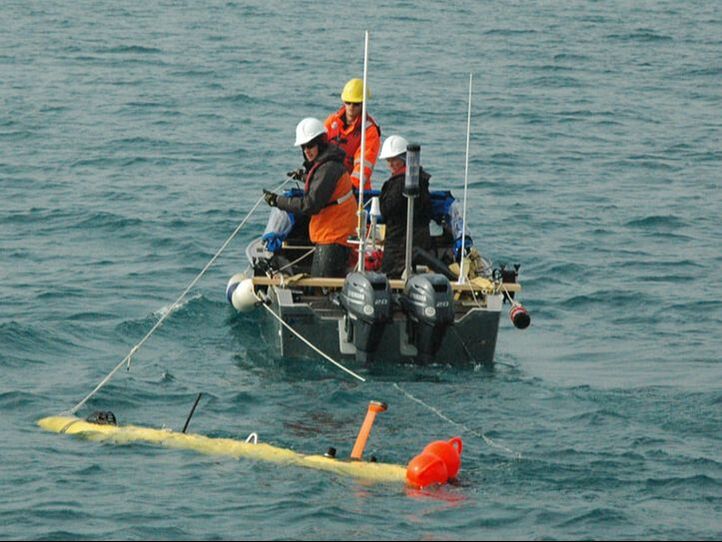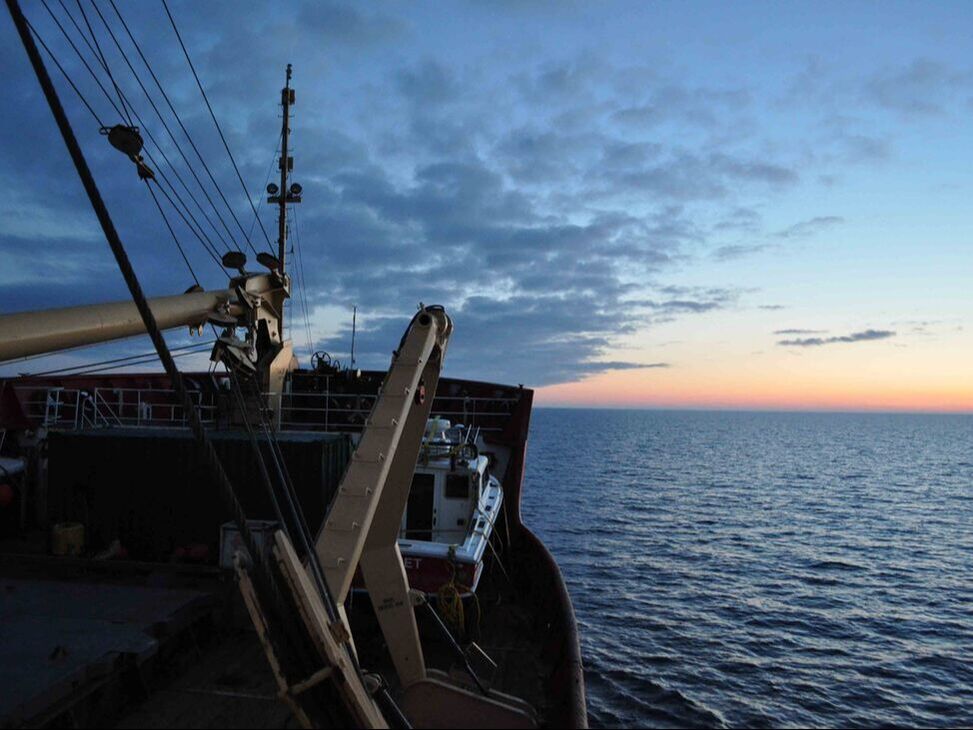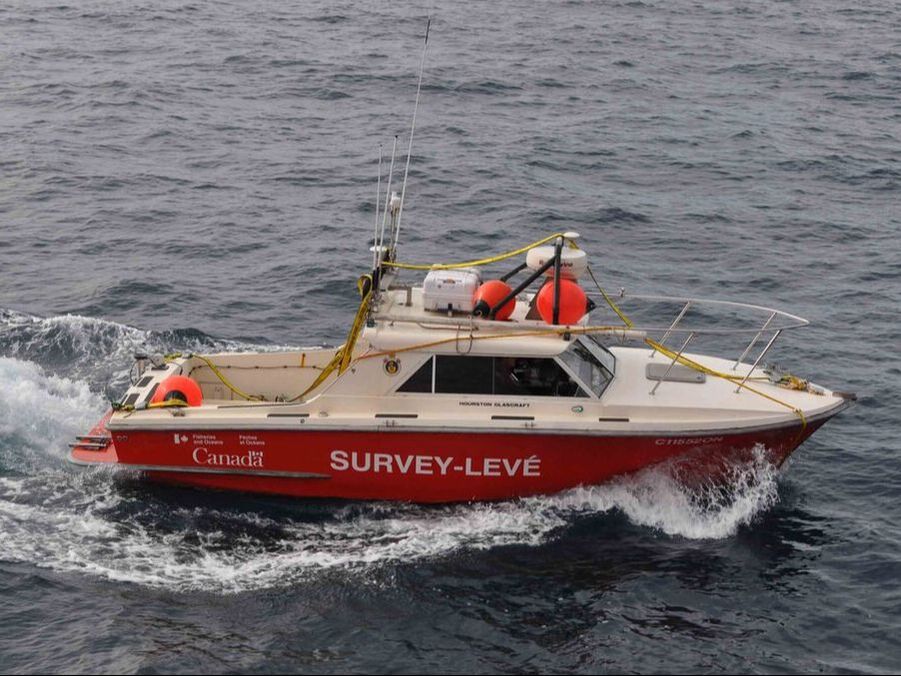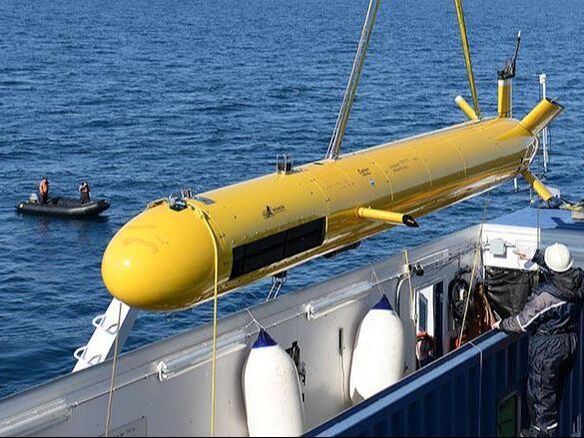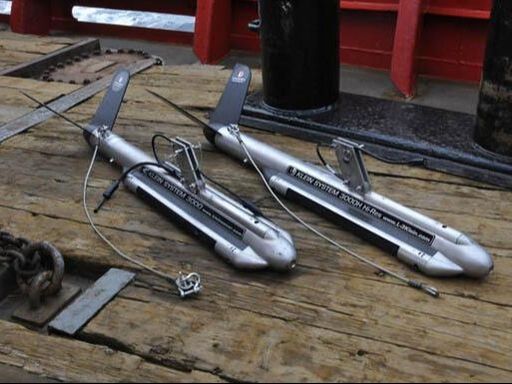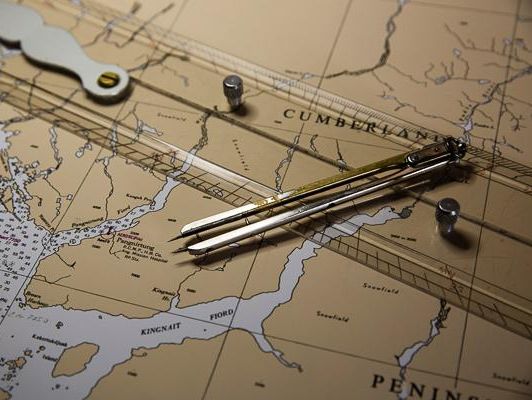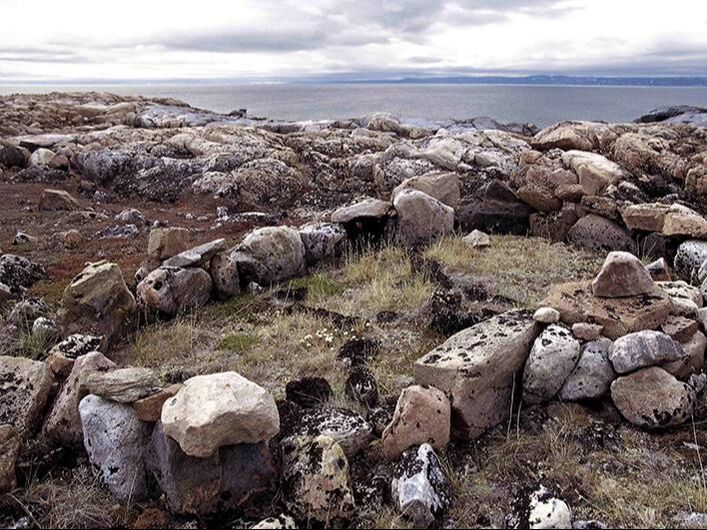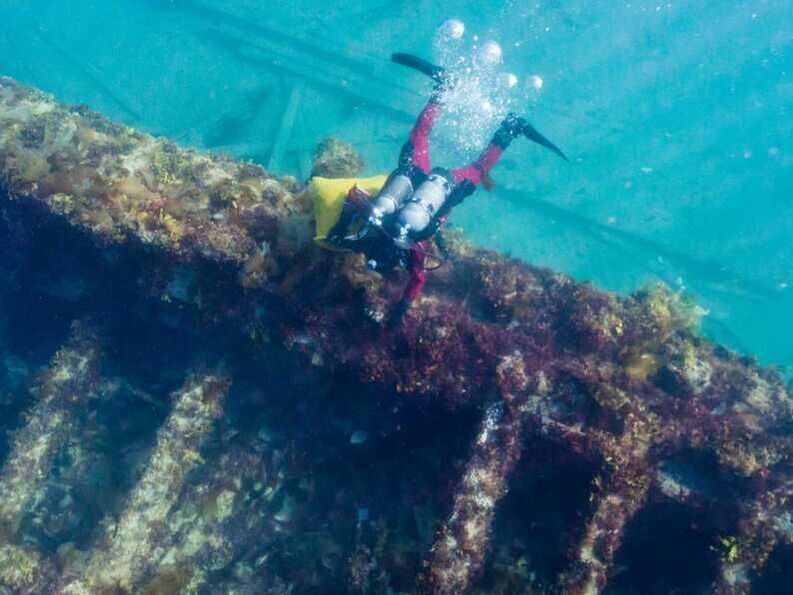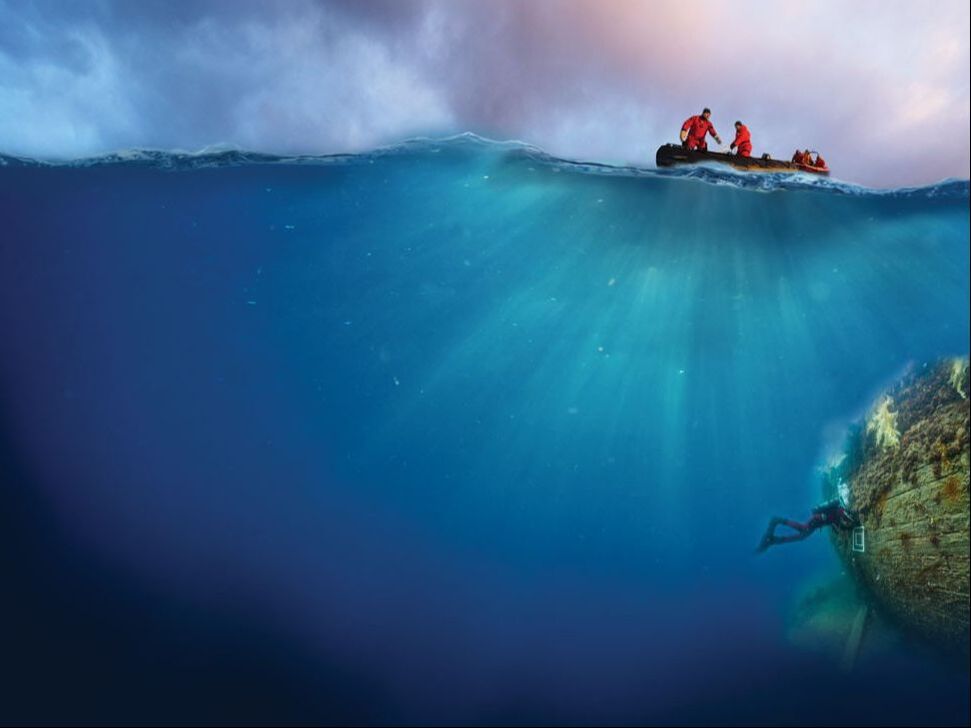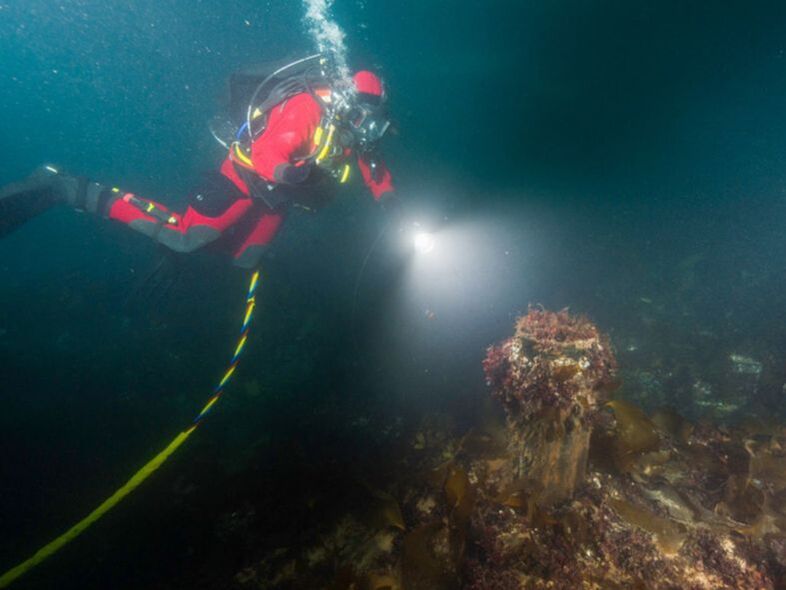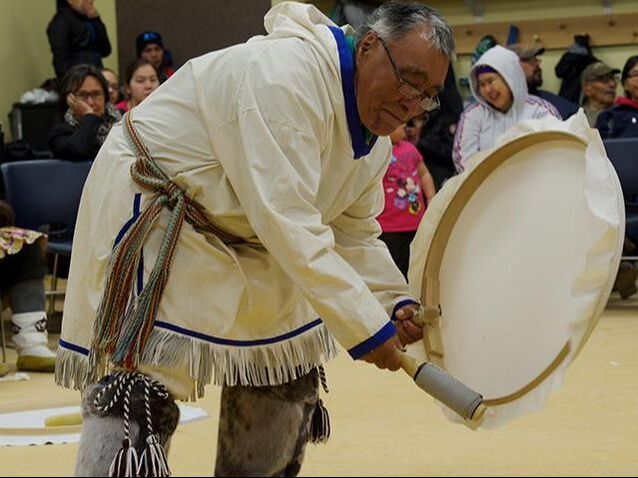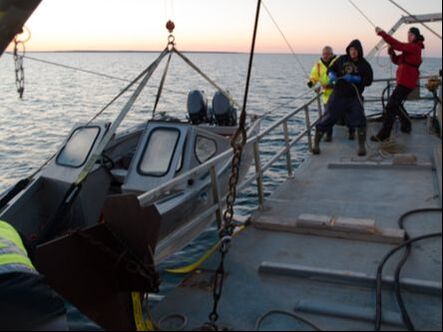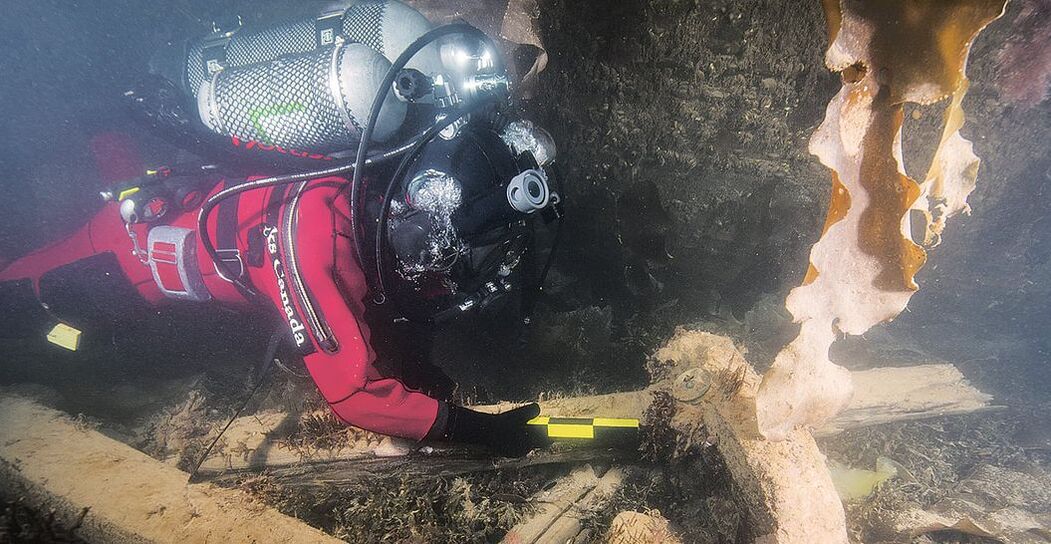- Home
- Technology
- Management
- Health Care
- Earth Sciences
- Particle Physics
- Engineering
- Stories of Turtle Island
- Startup Companies
- The Lost Ships of the Franklin Expedition
- Wildlife
- Archaeology
- Palaeontology
- Architecture, Land Use and Planning
- Politics and International Development
- COVID-19
- University Life
During the Victoria Strait Expedition in 2014, I was Canadian Geographic's on-location correspondent in the Arctic. The two-month long archaeological search set out to locate the lost ships of the Franklin Expedition, with a search pattern informed by archaeological evidence and the traditional knowledge of the Inuit.
In 1845, two Royal Navy ships set out from London to search for the Northwest Passage, but the ships and their crew never returned. The first search party set out in 1848, and over the next 150 years, there were dozens of other search parties scoured Canada's Arctic for clues that might reveal the fate of the lost expedition. They found some physical evidence: a ship's boat pulled up to shore, a stone cairn concealing a hand-written note, and even the remains of perished sailors -- complete with cut marks on their bones indicating that the crew had resorted to cannibalism in a futile attempt to survive. But the location of the ships HMS Erebus and HMS Terror remained a mystery until September 2014. During the Victoria Strait Expedition, a land-based archaeological team surveying Inuit tent rings spotted some scattered ship parts on an island in the Queen Maud Gulf. The next day, HMS Erebus was found in shallow water, not far from shore.
As the on-location correspondent, I lived on board the MV Martin Bergmann, a small scientific research vessel operated by the Arctic Research Foundation. I filed a series of web stories on the progress of the search via satellite, consulted with Inuit oral historians to understand their knowledge of Franklin's lost expedition, produced a 5000-word Canadian Geographic cover story on the shipwreck find, and later served as project editor for Franklin's Lost Ship, a 201-page book that was published by HarperCollins Canada in 2015.
In 1845, two Royal Navy ships set out from London to search for the Northwest Passage, but the ships and their crew never returned. The first search party set out in 1848, and over the next 150 years, there were dozens of other search parties scoured Canada's Arctic for clues that might reveal the fate of the lost expedition. They found some physical evidence: a ship's boat pulled up to shore, a stone cairn concealing a hand-written note, and even the remains of perished sailors -- complete with cut marks on their bones indicating that the crew had resorted to cannibalism in a futile attempt to survive. But the location of the ships HMS Erebus and HMS Terror remained a mystery until September 2014. During the Victoria Strait Expedition, a land-based archaeological team surveying Inuit tent rings spotted some scattered ship parts on an island in the Queen Maud Gulf. The next day, HMS Erebus was found in shallow water, not far from shore.
As the on-location correspondent, I lived on board the MV Martin Bergmann, a small scientific research vessel operated by the Arctic Research Foundation. I filed a series of web stories on the progress of the search via satellite, consulted with Inuit oral historians to understand their knowledge of Franklin's lost expedition, produced a 5000-word Canadian Geographic cover story on the shipwreck find, and later served as project editor for Franklin's Lost Ship, a 201-page book that was published by HarperCollins Canada in 2015.
Excellent sea conditions as search for Franklin beginsCalm seas and relatively clear weather in the Queen Maud Gulf in the past day have allowed Parks Canada’s search team to work around the clock surveying the sea bottom for the wrecks of Sir John Franklin’s lost ships. The endless daylight of the Arctic’s summer is marching quickly toward the endless night of its winter. It’s only dark for about 30 minutes of each day, but since these waters are ice free, there has been no need for the underwater archaeological team to slow its operations, even in the darkness.
“The conditions are about the best I’ve seen in six summers of searching for these ships,” says Parks Canada archaeologist Jonathan Moore. Click here for full text |
Victoria Strait Expedition sets course for first search areaFor the first time this year, Parks Canada’s early Franklin expedition team is approaching the southern search area in the Queen Maud Gulf. A rolling Arctic Ocean looks exactly as you’d expect it to, a steely grey dominating both water and sky. Icebergs bob to the north, and a small but hopeful patch of blue on the southern horizon hints that the weather is more pleasant somewhere else.
Wind out of the northwest has stirred the sea into swells that splash several metres high onto the bow of the ship. The research vessel Martin Bergmann can maintain a speed of only eight kilometres per hour, but it moves methodically toward its target. Click here for full text |
Search resumes after resupply in Cambridge Bay, NunavutAfter a weekend spent docked in Cambridge Bay, Nunavut, to switch sonar operators and resupply, Parks Canada’s underwater archaeology team is again aboard the research vessel Martin Bergmann, scouring the Queen Maud Gulf for signs of the lost ships of the Franklin Expedition.
“This year, the Arctic Research Foundation has brought in four competent helmsman who can help keep the boat on a straight line 24 hours a day,” says Ryan Harris, the lead of Parks Canada’s search for Erebus and Terror. “It’s been an efficient shipboard routine from the get go.” Click here for full text |
Full expedition search team comes together in Queen Maud GulfThe pieces of the Victoria Strait Expedition began to fall into place over the weekend, and by Monday afternoon the search for the Sir John Franklin’s lost ships,
HMS Terror and HMS Erebus, revved up to unprecedented levels, with the Arctic Research Foundation’s Martin Bergmann, One Ocean’s Voyager cruise ship, Parks Canada’s Investigator and the Canadian Coast Guard’s flagship ice breaker, Sir Wilfrid Laurier, all contributing to the search. Click here for full text |
Ice cover in Queen Maud Gulf allows surveyingThe first surveying trip of the Victoria Strait Expedition is wrapping up, with the crew of the research vessel Martin Bergmann making the 24-hour journey back to Cambridge Bay, Nunavut, to resupply.
Parks Canada’s underwater archaeology team surveyed in the Queen Maud Gulf for 52 straight hours, using side-scan sonar. The early focus was on Wilmot and Crampton bays, where Inuit in spotted a mast protruding from the water in the 19th century. Click here for full text |
Search team uses small boats to scour shallow waters“What you see underwater is often an extension of what you see on land,” says Parks Canada underwater archaeologist Ryan Harris.
“The land in the Queen Maud Gulf area is low rising, and here we see a lot of glacial relics with moraine features. Eskers and drumlins can pop up unexpectedly.” Charts of the Queen Maud Gulf — and much of the Arctic Archipelago — date largely from the 1950s. They paint a picture of the sea floor that is incomplete and frequently inaccurate. It’s a huge area, and much of it is still effectively uncharted. Click here for full text |
Land-based archaeological sites in Nunavut hole promiseAs searchers probe beneath the waves of the Queen Maud Gulf for signs of the Franklin Expedition’s ultimate fate, another, quite different, archaeological survey is taking place on the gulf’s islands. There are thousands of archaeological sites in Nunavut, ranging from tent rings left by the Thule (predecessors of the Inuit), to Inuit-built cairns, and inuksuit to artifacts left behind by European explorers such as Sir John Franklin and his crew.
Click here for full text |
Divers hope to see Franklin wreck this weekIt began as a mission to find shipwrecks, but once it was confirmed last week that the still unidentified vessel found in Queen Maud Gulf was indeed one of Sir John Franklin’s lost ships, the 2014 Victoria Strait Expedition turned into a dive mission.
Now, having spent the last few days planning and preparing, members of Parks Canada’s underwater archeology team are poised to descend on the wreck, which rests in about 11 metres of water at an undisclosed location in the gulf. Click here for full text |
High winds prevent Franklin Expedition wreck divesParks Canada divers hoping to descend to the wreck of one of Sir John Franklin’s ships continue to be hampered in their efforts by the weather. A cold wind continues to sweep out of the north, and as of 8 a.m. today, a light snow was blowing across the surface of a misty Queen Maud Gulf.
Since the team returned to the wreck site from Ottawa after last Tuesday, gale force winds have stymied operations. Click here for full text |
Divers descend to shipwreck for first timeA team of Parks Canada divers descended to the wreck of one of Sir John Franklin’s ships Wednesday, ending days of weather-related delays that had prevented them from becoming the first people to set eyes on the vessel in almost 170 years.
Divers were at the wreck site in Queen Maud Gulf from about 7.30 a.m. to 7.30 p.m., operating in two teams of four men each, split into a morning shift and an afternoon shift. It’s not known how many times each team dove on the wreck site, but each dive is believed to have lasted about one hour. Throughout the day, the team’s logistical needs were met by the Canadian Coast Guard, which ferried divers, oxygen tanks and even coffee between its Sir Wilfrid Laurier icebreaker and the dive site. Click here for full text |
Inuit oral history expert discusses Franklin shipwreck findIt is Saturday September 13, 2014–the first quiet day that Louie Kamookak has enjoyed since Tuesday’s announcement that one of the lost ships of the Franklin Expedition had been found. We are spending the afternoon at his cabin, perched on a ridge between the sea and a shallow inland lake, just a few kilometers east of Gjoa Haven, Nunavut. For everyone in Gjoa Haven, the find was a celebration. The entire community crowded together for a feast of char and dried caribou punctuated by traditional drumming, singing and dancing. Among the speakers was Kamookak, whose research into Inuit oral history influenced which areas Parks Canada chose to search for the ships. Click here for full text |
MV Martin Bergmann hits a shoal in Arctic Ocean4:25 am, 03/09/14. Rocks are punching at the hull. They’re hammering hard just below the water line. On a good night, I sleep just below the water line. This is not shaping up to be a good night. I’m definitely not asleep, and I’m beginning to think I could end up below the water line permanently.
We are plying uncharted arctic waters, and an unseen, unnamed shoal is trying to pound its way in to the research vessel Martin Bergmann. The force of the impact reverberates up from the keel. The wall beside me shudders. I press my bare back against it when I sleep, because the frigid water on the other side keeps it cold, even when the crowded cabin overheats from the warmth generated by eight working men. Click here for full text |
How the Franklin ships were found
5000-word Canadian Geographic cover story
This is a story about ice. The tale of the catastrophic British Naval Northwest Passage Expedition has always been about ice. For all the mystery that obscures the calamities and ruinous decisions that ended in the deaths of Sir John Franklin and 129 British sailors in 1848, as well as the disappearance of a pair of 30-metre-long ships, the influence of ice has remained the certainty.
The 2014 Victoria Strait Expedition to find HMS Erebus and HMS Terror was itself beset by ice-slowed down, pushed off course and very nearly defeated by it. The expedition had a fleet of vessels armed with the world's best sunken-wreck-finding technology, but extreme conditions quickly dampened spirits and scattered ships.
Click here for full text
The 2014 Victoria Strait Expedition to find HMS Erebus and HMS Terror was itself beset by ice-slowed down, pushed off course and very nearly defeated by it. The expedition had a fleet of vessels armed with the world's best sunken-wreck-finding technology, but extreme conditions quickly dampened spirits and scattered ships.
Click here for full text
